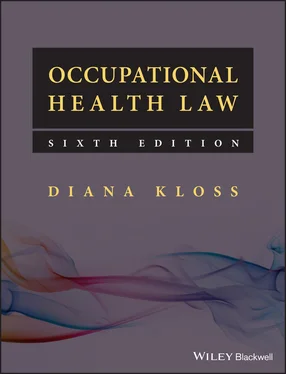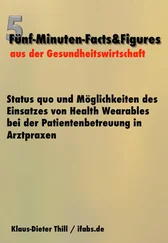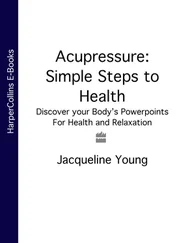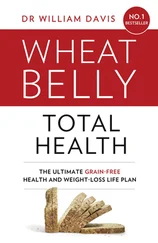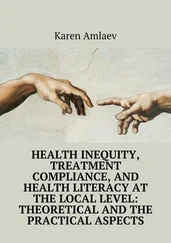2.7 Professional standards
In 2007, the Disability Rights Commission, in the last months of its existence before it was subsumed into the Equality and Human Rights Commission, undertook a formal investigation of professional regulation of teaching, nursing and social work and disabled people’s access to those professions. The panel of inquiry disclosed that there is still a considerable body of legislation and guidance for the professions which lays down generalised standards of good health or fitness for entry and frequently undermines disability equality ( Maintaining standards: promoting equality ). For example, the Nursing and Midwifery Order 2001 makes provision for the NMC to prescribe requirements to be met by nurses and midwives applying for registration as to evidence of good health and character and gives power to investigate whether fitness for practice is impaired. Guidance emphasises the need for disclosure and implies that failure to disclose a health condition may constitute professional misconduct. The recommendation of the panel was that these general legal requirements for professionals should be revoked. Failure to disclose a disability or long‐term health condition should not be regarded as professional misconduct leading to disciplinary procedures unless there are serious concerns about the effect of the disability on the performance of the job, as in the case of a cardio‐thoracic surgeon who knows or suspects that he is a carrier of a blood‐borne virus, but fails to seek or take OH advice. The recommendations of the inquiry were not implemented, other than in the updating of disability discrimination law in the Equality Act.
2.8 Consent to medical treatment
Every adult is entitled to decide what physical contact he will permit and it is both criminal and tortious to perform any form of medical examination or treatment on him without his consent. The layman describes such an invasion of the person as an assault, but technically an assault is only a threat of physical contact; the unpermitted contact itself is described as a battery. The fact that a patient may need treatment, even life‐saving treatment, is irrelevant: the patient must decide.
There are several exceptions. Where the patient is unconscious, emergency treatment of a life‐saving nature may be performed without consent. It is not legally necessary to obtain the consent of relatives in such a case, but the Mental Capacity Act 2005 provides that, where practicable, relatives or friends should be consulted. Consent may be implied by conduct: the employee who holds out his arm for blood to be taken need not, strictly speaking, be required to sign a consent form. Children of 16 or over have the right to give consent on their own behalf (Family Law Reform Act 1969) and the parents’ views are irrelevant unless the child is physically or mentally handicapped (this is despite the law that full legal independence is only acquired at 18). However, parents or guardians can give consent to treatment against the child’s wishes in the child’s best interests up to the age of 18 ( Re R (a minor) (wardship: medical treatment) (1992)). Treatment of children too young to give valid consent can only be performed with the consent of at least one parent, or the local authority if they are in care; older children under 16 may give a valid consent if they can appreciate the nature and consequences of the treatment ( Gillick v. West Norfolk and Wisbech AHA (1985)).
There is no battery if the patient knows the broad nature of the proposed treatment and agrees to it. Suppose that an OH physician undertakes a programme of vaccination at the place of work. He obtains the written consent of each individual worker to give injections of a particular vaccine. He commits no battery, but he may still be held liable in negligence if he has not informed the workers, before they agreed to participate, of any risks inherent in the vaccine to be administered. This is the doctrine of ‘informed consent’ and it is part of the law of negligence. In Sidaway v. Board of Governors of the Bethlem Royal and the Maudsley Hospital (1985) it was held by the majority in the House of Lords that the Bolam test should be applied to issues of consent and that health professionals, when seeking consent, must give the patient the information which a reasonable health professional would give. However, the law was changed by the Supreme Court in Montgomery v. Lanarkshire Health Board (2015). The claimant was a woman of short stature who was diabetic. She was pregnant and under the care of a consultant obstetrician employed by the Health Board. There was a risk of a larger than average baby and of shoulder dystocia if delivered vaginally. The risk of a serious injury in that event was small, around 0.2 per cent. The doctor did not warn the mother of this possibility nor advise her of the available alternative of delivery by caesarean section since the risk was small and she held the opinion that caesarean sections are not in general in the mothers’ interests. Shoulder dystocia occurred during labour and the baby was deprived of oxygen, resulting in cerebral palsy and a brachial plexus injury. The Supreme Court rejected the Bolam test in the context of consent to treatment. They held that a patient should be given the information that a reasonable patient would want to know, rather than what a reasonable doctor would tell them.
The judgment summarised the law as follows:
An adult person of sound mind is entitled to decide which, if any, of the available forms of treatment to undergo, and her consent must be obtained before treatment interfering with her bodily integrity is undertaken. The doctor is therefore under a duty to take reasonable care to ensure that the patient is aware of any material risks involved in any recommended treatment, and of any reasonable alternative or variant treatments. The test of materiality is whether, in the circumstances of the particular case, a reasonable person in the patient’s position would be likely to attach significance to the risk, or the doctor is or should reasonably be aware that the particular patient would be likely to attach significance to it.
Assessment of materiality of risks cannot be reduced to percentages but depends on a number of factors including the circumstances of the particular patient and the seriousness of the risk. The doctor should engage in a discussion with the patient giving information in a form which the patient is able to understand. It is only exceptionally that the doctor is entitled to withhold from the patient information that might be psychologically damaging (therapeutic privilege). The doctor must allow the patient to make an informed choice even if it is arguably contrary to their best interests. And, of course, the signing of a consent form is not conclusive. There must be documented evidence of a discussion with the patient before the signature is obtained. In 2019 the GMC engaged in consultation about the revision of its guidance on consent.
The consent of an individual to the taking of blood will prevent it from being either a criminal or civil battery, unless he was misled by false information as to the purpose of the test. It is a breach of the data protection legislation to use the results of a test taken for one purpose for a different purpose ( Chapter 3).
Where a health care worker has suffered a needlestick injury and has been exposed to the blood or body fluids of a patient who is unconscious or otherwise incompetent, there is doubt about whether an HIV test may lawfully be performed on blood already obtained from the patient for other purposes. Under the common law and the Mental Capacity Act 2005, procedures can be undertaken without consent in the patient’s best interests where a patient lacks capacity. The problem is that such a test would be undertaken to protect the health care worker, not the patient. Where there is a likelihood that the patient is HIV‐positive, post‐exposure prophylactic drugs may be administered to the health care worker as a precautionary measure, but these drugs carry serious side effects and it would obviously be preferable if they could be avoided. The legal position has become even more uncertain since the Human Tissue Act 2004 became law (the law is different in Scotland, where the Human Tissue (Scotland) Act 2006, under review, does not cover tissue removed from living people, other than for transplantation). Under the Act, appropriate consent is needed to be able to retain blood or tissue from a living individual. If the patient has not been told that retained blood may be tested for blood‐borne viruses and given consent, such a test is in apparent breach of the Act. In addition, if a conscious patient is asked to agree to a test and refuses, the test cannot lawfully be performed. One option that has been suggested is to offer the patient a test, but to undertake that a positive result will not be recorded. However, in that event it would surely be negligent not to offer treatment to the patient. Anti‐retroviral drugs have been very successful in prolonging the lives of those living with HIV. The Faculty of Occupational Medicine’s Ethics Guidance for Occupational Health Practice (2018) states at paragraph 3.53 that currently there is no exception to the need for consent to test source patient samples. However, in Aintree University Hospitals NHS Foundation Trust v. David James (2013), the Supreme Court advised that where there is evidence, probably from relatives, that a patient who currently lacks capacity would, if they had capacity, have been willing to agree to a medical procedure for the benefit of others, the doctor may be entitled to authorise the procedure in the patient’s best interests. In 2016 the BMA published detailed guidance: Needlestick injuries and blood‐borne viruses: decisions about testing adults who lack the capacity to consent .
Читать дальше
